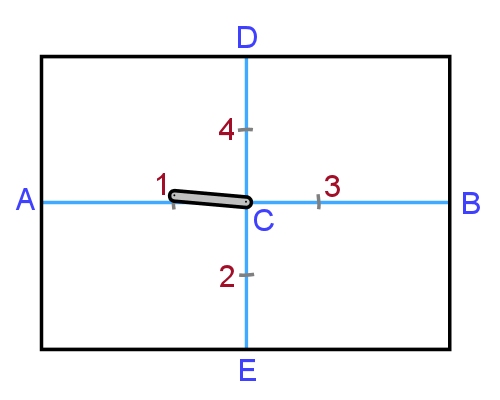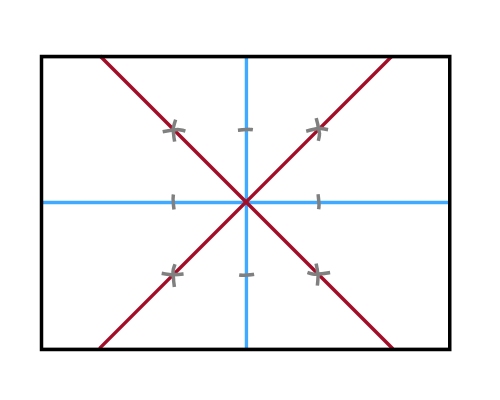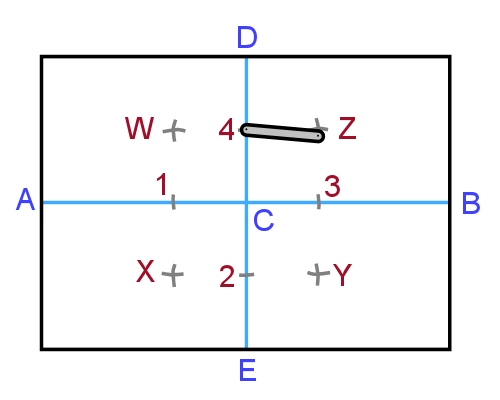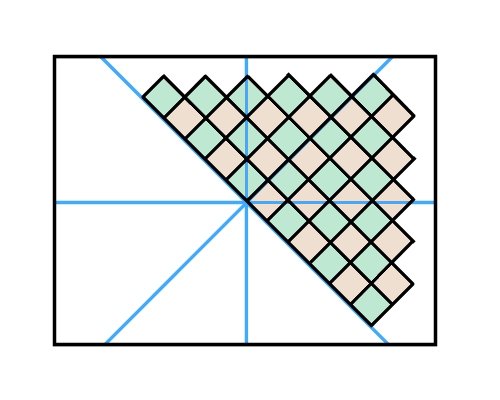Diagonal layouts
 Audio for slide 2 (mp3 |6|KB)
Audio for slide 2 (mp3 |6|KB)
Marking the working lines
- Find the centre point (C) and mark the centre lines as shown in the Section 2 lesson 'Finding the starting point'.
- Using a marking gauge or bar scriber, mark the points 1, 2, 3 and 4.

 Audio for slide 4 (mp3 |6|KB)
Audio for slide 4 (mp3 |6|KB)
- Strike a chalk line to form the line XZ.
Do the same to form WY. - Check that the tile widths balance properly at the walls using the techniques described in the lesson 'Marking working lines'.

 Audio for slide 6 (mp3 |6|KB)
Audio for slide 6 (mp3 |6|KB)
To check that the field tiles are being laid accurately, you can draw reference lines at right angles to the original centre lines to make sure that the points of the tiles are lining up correctly.
To mark the cut for the border tiles, you can use a template cut from a piece of sheet material. See the video in the learning activity below for details on how to make the template.
Place the tile to be cut in the space where the last full tile will go and mark it accordingly.
Then cut it and push it hard against the wall, with a full tile behind it to check that the cut is correct.

To mark the cut for the border tiles, you can use a template cut from a piece of sheet material. See the video in the learning activity below for details on how to make the template.
Place the tile to be cut in the space where the last full tile will go and mark it accordingly.
Then cut it and push it hard against the wall, with a full tile behind it to check that the cut is correct.


Learning activity
Audio 7 (mp3 |6|KB)Have a go at setting out the working lines for a diagonal tile layout in the room you're in right now. If the room is an unusual shape or unsuitable for this activity, go to a nearby room or floor area. You may use a square section of the overall floor if that is easier.
Draw up a plan of the floor area you have used and mark the basic perimeter dimensions. Fill in the working lines and relevant measurements.

Go to Corridors and columns

Industry Network Training and Assessment Resourses
© 2023 Workspace Training






